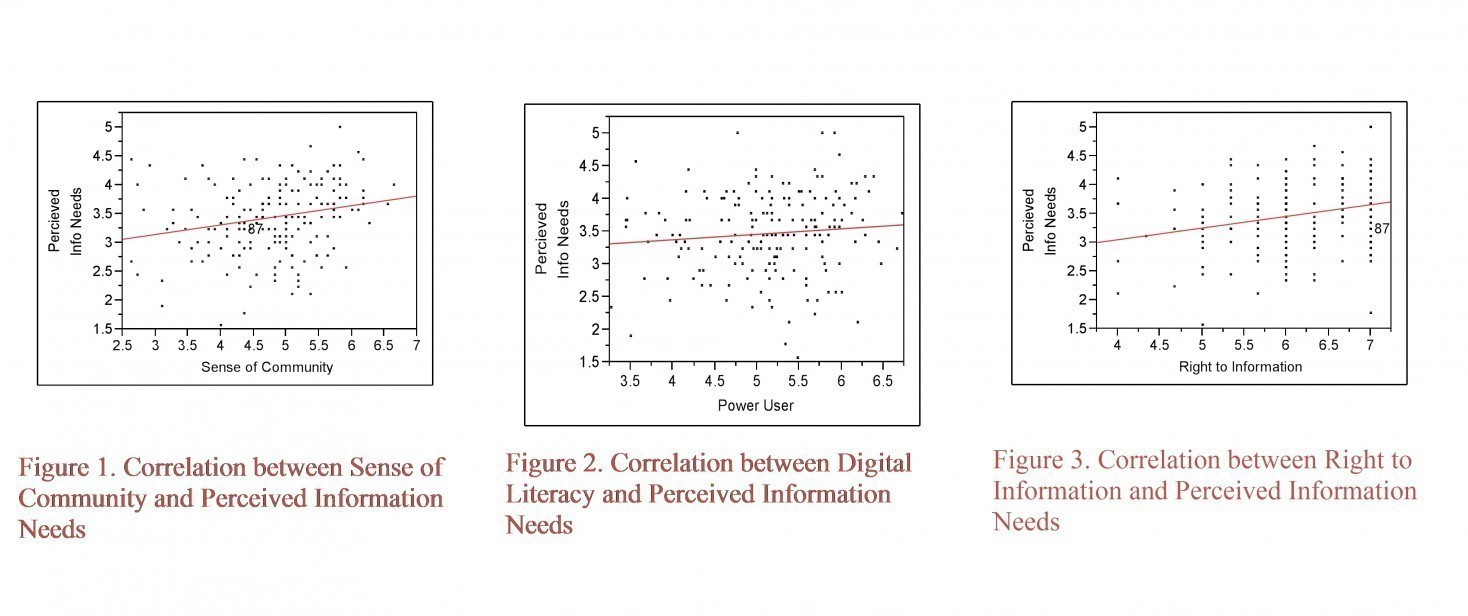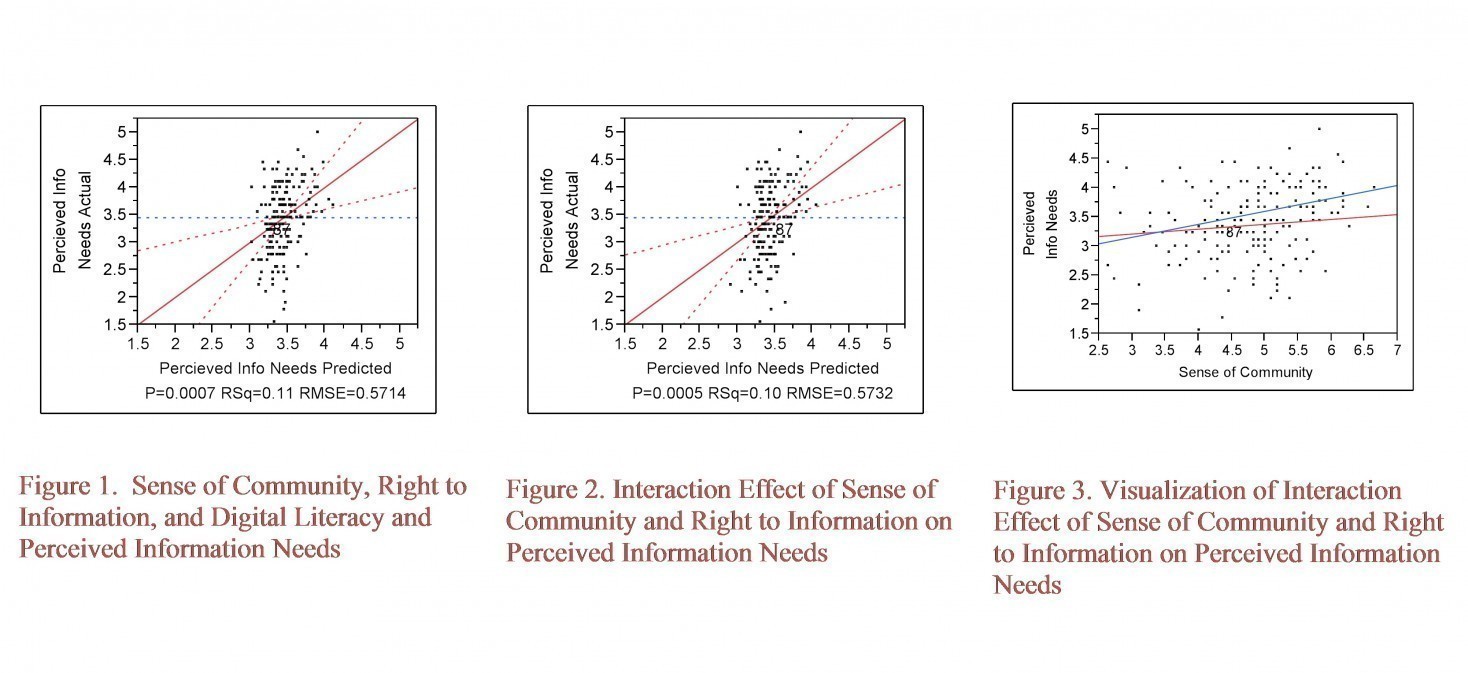Media Effects Research Lab - Research Archive
Projecting community information needs
Student Researcher(s)
Katie M. Blevins (Masters Candidate);
Brian MacAuley (Masters Candidate);
Harry Robinson (Masters Candidate);
Michelle Young (Masters Candidate);
Faculty Supervisor
INTRODUCTION
Despite the evolving nature of communities, which can be attributed in large part to how new technologies have affected communication within communities, very little research has been done on the influence of these technologies. Less research has been done on the ways new technology could improve communication within communities. Of particular interest is the possible benefit that a local interactive community content could provide. This research systematically explores the relationship between several factors: sense of community, community involvement, digital literacy, right-to-information, perceived information needs, and intent to participate in the community.
RESEARCH QUESTION / HYPOTHESES
To get specifically at the factors described above, the guiding question of this study is: For community members, what is the relationship between sense of community, digital literacy, right-to-information, and perceived information needs? The exploratory nature of this study means that the researchers chose not to propose a hypothesis, choosing instead to see what information emerged from the analysis of the survey data. The next section will address the methodology used to address this research question.
METHOD
This study uses a cross-sectional survey of local community residents to answer the research question. The survey was posted online and the responses of 193 residents, gathered through an email list generated by the dominant employer in the community, were analyzed. The survey consisted of 56 items, most of which were answered on a Likert-type scale. Participants were generally long-term community members above 40 years of age.
RESULTS
Our findings show that there is a predictive relationship between both sense of community and right-to-information (IVs) and perceived information needs (DV), while digital literacy (IV) has no predictive effect.

The relationships between our main research question variables are made more complex by other variables introduced to measure current levels of community involvement and attendance at community events.

In particular, right-to-information, perceived information needs and community involvement are all predictive of actual attendance at community events, which was an unanticipated finding of this survey.
CONCLUSION
Radio, the Internet, and newspapers all proved to be significant antecedent factors for the sense of community, right-to-information, perceived information needs, and community involvement variables. The Internet finding is especially pertinent as it validates the goal of putting community information online. Furthermore, the correlation of sense of community, right-to-information, and community involvement to perceived information needs demonstrates the potential of fostering local community connections by making community information available online.
The strong positive relationship between the right to information and perceived information needs suggests that if a person is involved in their community, they are likely involved on several levels. In this particular instance, the need for both types of information suggests involvement politically and socially- fulfilling the role of the "good" citizen, as conceptualized by the participatory democracy literature.
Community involvement not only has a positive relationship with perceived information needs, it also moderates sense of community. This moderating influence suggests that community involvement is an essential component of sense of community. The surprise variable in this equation is the likelihood of community attendance which, along with perceived information needs, suggests that an online community calendar could be a positive addition to existing communities.
The study found that high community involvement, moderating sense of community, and a high perceived right-to-information increases the likelihood that citizens will want more local information. However, the most important finding of this study is the link between community involvement, right-to-information and perceived information needs to attendance at community events. This relationship is generally a strong positive predictor of citizen’s behavior.
For more details regarding the study contact
Dr. S. Shyam Sundar by e-mail at sss12@psu.edu or by telephone at (814) 865-2173

